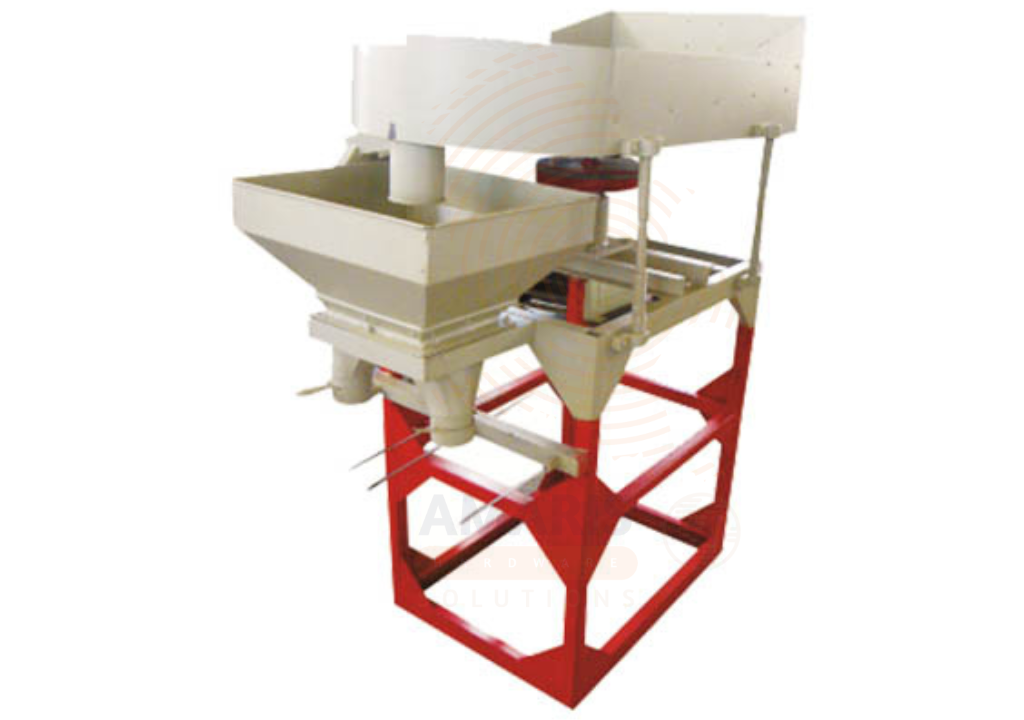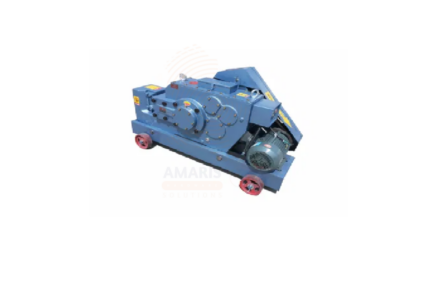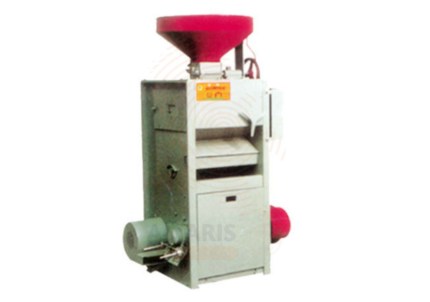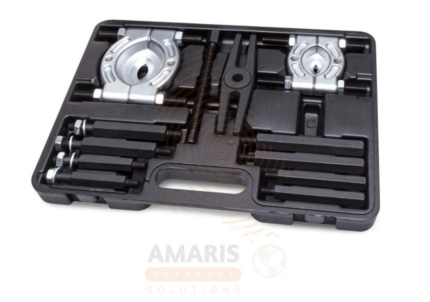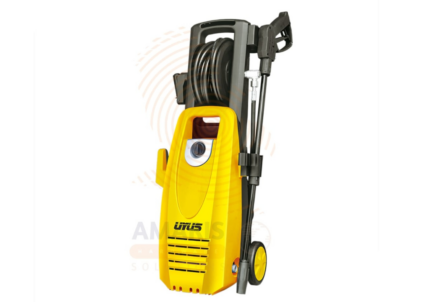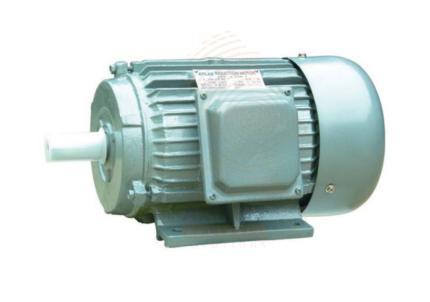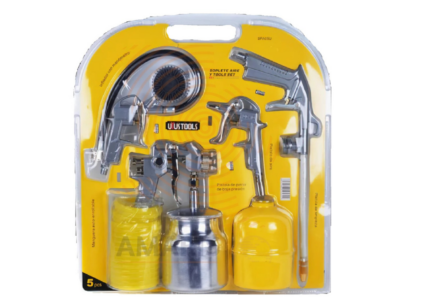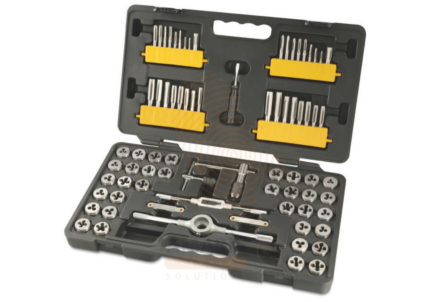Rice Grader
WhatsApp Order
A Rice Grader is a specialized agricultural and industrial machine used to classify rice grains based on size, shape, or weight during the post-harvest processing stage. It is essential in rice mills and grain processing plants to ensure consistent product quality by separating broken, small, and full grains. The grading process increases the value of the rice, improves packaging consistency, and ensures compliance with commercial standards.
Description
Table of Contents
ToggleRice Grader
Uses
-
Size Grading
o Sorts rice grains into uniform sizes for improved appearance and packaging.
o Removes broken or undersized grains that reduce market value. -
Shape Sorting
o Separates grains by shape for specialty rice varieties requiring uniform grain structure. -
Post-Milling Quality Control
o Applied after dehusking and polishing to remove irregular grains. -
Foreign Material Removal
o Eliminates fine debris, husks, or small stones through mesh or vibration-based separation. -
Commercial Processing
o Used in large-scale rice milling operations for high-throughput sorting and grading. -
Product Value Enhancement
o Improves the grade of rice to meet export or local premium market standards. -
Packaging Preparation
o Prepares sorted grains for efficient and accurate packaging based on grade.
SAFETY HANDLING PRECAUTIONS
Safety Precautions
-
Wear Protective Gear
o Use dust masks to protect against airborne rice particles.
o Wear safety goggles when near moving or vibrating parts.
o Use gloves during cleaning and maintenance tasks. -
Inspect Machine Before Use
o Check for worn or loose screens and ensure components are properly aligned.
o Confirm safety guards and covers are intact. -
Operate Safely
o Do not exceed input capacity to avoid jamming or motor strain.
o Keep hands and tools clear of vibrating or rotating components. -
Maintain a Safe Work Area
o Keep floors dry and free of spilled grain to prevent slips.
o Ensure good ventilation to reduce dust accumulation. -
Electrical Safety
o Check electrical connections and use grounded outlets.
o Do not operate in damp conditions. -
Routine Maintenance
o Clean screens, hoppers, and moving parts after each use.
o Lubricate and inspect mechanical systems regularly. -
Training and Supervision
o Only trained personnel should operate the grader.
o Operators should be familiar with emergency stop controls and shutdown procedures.
Related products
Bearing Extractor
Grease Gun
A grease gun is a hand-held tool designed for lubricating various mechanical components, typically in automotive or industrial settings. It is used to apply grease, a semi-solid lubricant, to specific points on machinery, such as bearings, joints, and other moving parts, to reduce friction and wear. The grease gun typically consists of a cylinder, a handle or trigger mechanism, and a nozzle for dispensing grease. It is commonly employed to ensure proper maintenance and longevity of machinery by facilitating the smooth operation of mechanical parts.
High pressure washer
A High pressure washer, rated at 2000 watts, is a powerful cleaning device designed for various applications, such as cleaning surfaces, vehicles, outdoor spaces, and more. The "2000W" indicates the power consumption or wattage of the washer, suggesting a robust motor that can generate high water pressure for effective cleaning. This type of pressure washer is likely to deliver strong water jets, making it suitable for tackling tough dirt, grime, and stains in residential or industrial settings. The versatility and efficiency of a 2000W high-pressure washer make it a popular choice for tasks that demand substantial cleaning power.
Hose for Air Compressor
A Hose for Air Compressor is a flexible and durable conduit designed to connect the air compressor to pneumatic tools, equipment, or other devices requiring compressed air. Typically made of materials such as rubber, PVC, or hybrid blends, these hoses are capable of withstanding high pressure and provide a pathway for the compressed air to flow from the compressor to the intended application. The hose facilitates the efficient and controlled transfer of compressed air, enabling various pneumatic tools and devices to operate effectively in a wide range of industrial, automotive, and household applications.
Motor
A Motor is an electromechanical device that converts electrical energy into mechanical motion, commonly used to power machines, tools, pumps, fans, and other mechanical systems. Motors come in various types, including AC motors, DC motors, single-phase, and three-phase variants, each designed to match specific application requirements. They vary in size, torque, speed, and efficiency depending on the use case—from small appliances to industrial machinery. Electric motors are essential components in automation, manufacturing, HVAC systems, agricultural equipment, and countless mechanical operations where consistent, reliable power is required for movement or rotation. Their energy efficiency, long lifespan, and ease of integration make them a cornerstone of mechanical design.
Spray Gun & Air Tool Accessory Kit Set
A Spray Gun & Air Tool Accessory Kit Set typically refers to a package or bundle that includes five essential components or accessories designed to complement and enhance the functionality of spray guns and air tools. These kits are commonly used in various applications, such as automotive painting, woodworking, and other projects where spray painting or air-powered tools are employed. The specific contents of the kit may vary, but it often includes items such as different nozzle attachments, connectors, air hoses, and other accessories necessary for optimal performance and versatility with spray guns and air tools. The aim is to provide users with a comprehensive set of tools and accessories to meet their diverse needs in a convenient and cost-effective manner.
Stone Separator
A stone separator is an agricultural or industrial machine designed to remove stones and other unwanted materials from grains, seeds, soil, or construction aggregates. Using vibration, airflow, or gravity-based separation methods, it ensures cleaner, higher-quality end products. Stone separators are commonly used in farming, food processing, milling, and construction to improve operational efficiency and prevent equipment damage from hard debris.
Tap and Die Set
A tap and die set is a collection of tools designed for threading and cutting threads on screws, bolts, and other fasteners. The set typically includes various sizes of taps and dies, which are used for creating or repairing threads on metal surfaces. Taps are used to cut internal threads, while dies are used for cutting external threads.
A 32-piece set implies that it contains 32 individual tools, which may include both taps and dies in different sizes. The sizes can vary to accommodate a range of thread specifications commonly found in mechanical and automotive applications. These sets are useful for machinists, mechanics, or anyone involved in metalworking who needs to create or repair threads in various sizes and diameters. The set may also come with a case for organization and storage, making it a convenient and versatile tool kit for threading tasks.


 Acrylic Sealants
Acrylic Sealants Construction Adhesives
Construction Adhesives Double-Sided Tape
Double-Sided Tape Duct Tape
Duct Tape Electrical Tape
Electrical Tape Epoxy & Resins
Epoxy & Resins Masking Tape
Masking Tape
 Automotive Wrenches & Socket Sets
Automotive Wrenches & Socket Sets Battery Chargers & Jump Starters
Battery Chargers & Jump Starters Car Jacks & Stands
Car Jacks & Stands Car Wash & Detailing Products
Car Wash & Detailing Products Diagnostic Tools
Diagnostic Tools Tire Inflators
Tire Inflators Vehicle Lighting
Vehicle Lighting Oil & Lubricants
Oil & Lubricants
 Adhesives & Sealants
Adhesives & Sealants Bricks & Blocks
Bricks & Blocks Cement & Concrete
Cement & Concrete Drywall & Plaster
Drywall & Plaster Flooring (Tiles, Wood, Laminate)
Flooring (Tiles, Wood, Laminate) Lumber & Plywood
Lumber & Plywood Paints, Primers & Coatings
Paints, Primers & Coatings Insulation Materials
Insulation Materials Roofing Materials
Roofing Materials
 Circuit Breakers
Circuit Breakers Electrical Cables & Wires
Electrical Cables & Wires Switches & Sockets
Switches & Sockets Fuses & Relays
Fuses & Relays Connectors & Terminals
Connectors & Terminals Electrical Boxes & Panels
Electrical Boxes & Panels Conduit & Fittings
Conduit & Fittings Lighting Fixtures & Bulbs
Lighting Fixtures & Bulbs Extension Cords & Power Strips
Extension Cords & Power Strips
 Anchors
Anchors Bolts
Bolts Clips & Clamps
Clips & Clamps Screws
Screws Nuts
Nuts Washers
Washers Rivets
Rivets Nails
Nails Threaded Rods
Threaded Rods
 Hammers
Hammers Measuring Tools (Tapes, Levels, Calipers)
Measuring Tools (Tapes, Levels, Calipers) Screwdrivers
Screwdrivers Pliers & Cutters
Pliers & Cutters Saws & Blades
Saws & Blades Chisels & Punches
Chisels & Punches Allen Keys & Hex Keys
Allen Keys & Hex Keys Ratchets & Socket Sets
Ratchets & Socket Sets Wrenches & Spanners
Wrenches & Spanners
 Power Tool Accessories (Blades, Bits, Discs)
Power Tool Accessories (Blades, Bits, Discs) Rotary Tools
Rotary Tools Saws (Circular, Jigsaw, Reciprocating)
Saws (Circular, Jigsaw, Reciprocating) Drills & Drivers
Drills & Drivers Grinders & Sanders
Grinders & Sanders Heat Guns
Heat Guns Nail Guns
Nail Guns Impact Wrenches
Impact Wrenches Batteries & Chargers
Batteries & Chargers
 Pipes & Fittings (PVC, Copper, PEX)
Pipes & Fittings (PVC, Copper, PEX) Plumbing Tools
Plumbing Tools Pumps & Motors
Pumps & Motors Sealants & Adhesives for Plumbing
Sealants & Adhesives for Plumbing Valves & Taps
Valves & Taps Water Heaters
Water Heaters Drainage Systems
Drainage Systems Faucets & Fixtures
Faucets & Fixtures Hoses & Tubing
Hoses & Tubing
 Hinges & Latches
Hinges & Latches Hooks & Brackets
Hooks & Brackets Window Hardware
Window Hardware Chains & Cables
Chains & Cables Casters & Wheels
Casters & Wheels Shelving & Storage Systems
Shelving & Storage Systems Door Handles & Locks
Door Handles & Locks Drawer Slides & Cabinet Hardware
Drawer Slides & Cabinet Hardware
 Personal Protective Equipment (PPE)
Personal Protective Equipment (PPE) Respirators & Masks
Respirators & Masks Safety Glasses
Safety Glasses Safes
Safes Security Cameras
Security Cameras Gloves
Gloves Helmets
Helmets Ear Protection
Ear Protection Fire Safety Equipment
Fire Safety Equipment Locks & Padlocks
Locks & Padlocks Motion Sensors & Alarms
Motion Sensors & Alarms
 Garden Fencing
Garden Fencing Garden Furniture Hardware
Garden Furniture Hardware Lawn Mowers
Lawn Mowers Trimmers & Edgers
Trimmers & Edgers Shovels & Spades
Shovels & Spades Rakes & Hoes
Rakes & Hoes Pruning Shears & Loppers
Pruning Shears & Loppers Watering Systems (Hoses, Sprinklers, Nozzles)
Watering Systems (Hoses, Sprinklers, Nozzles)
 Interior Paints
Interior Paints Paint Brushes & Rollers
Paint Brushes & Rollers Paint Strippers & Thinners
Paint Strippers & Thinners Paint Trays & Accessories
Paint Trays & Accessories Exterior Paints
Exterior Paints Spray Paints
Spray Paints Primers & Undercoats
Primers & Undercoats Varnishes & Stains
Varnishes & Stains
 Gaskets & Seals
Gaskets & Seals Hydraulic Fittings
Hydraulic Fittings Industrial Fasteners
Industrial Fasteners Industrial Hoses
Industrial Hoses Lubricants & Greases
Lubricants & Greases Metal Sheets & Bars
Metal Sheets & Bars Bearings & Bushings
Bearings & Bushings Belts & Pulleys
Belts & Pulleys
 HVAC Filters
HVAC Filters Insulation for HVAC
Insulation for HVAC Air Conditioners
Air Conditioners Refrigerants
Refrigerants Ventilation Ducts & Fittings
Ventilation Ducts & Fittings Thermostats & Controllers
Thermostats & Controllers Fans & Blowers
Fans & Blowers
 Pegboards & Hooks
Pegboards & Hooks Shelving Units
Shelving Units Storage Bins & Containers
Storage Bins & Containers Toolboxes & Tool Chests
Toolboxes & Tool Chests Workbenches
Workbenches Drawer Organizers
Drawer Organizers Labeling Supplies
Labeling Supplies
 Welding Accessories (Clamps, Brushes)
Welding Accessories (Clamps, Brushes) Welding Electrodes & Rods
Welding Electrodes & Rods Welding Helmets & Gloves
Welding Helmets & Gloves Welding Machines
Welding Machines Soldering Irons & Stations
Soldering Irons & Stations Flux & Solder Wire
Flux & Solder Wire
 Generator Accessories
Generator Accessories Inverters
Inverters Portable Generators
Portable Generators Power Inverters
Power Inverters Transfer Switches
Transfer Switches Diesel & Gasoline Generators
Diesel & Gasoline Generators
 Transport Equipment: Carts, Dollies, and Hand Trucks
Transport Equipment: Carts, Dollies, and Hand Trucks Storage Solutions: Pallets, Racks, and Containers
Storage Solutions: Pallets, Racks, and Containers Lifting Equipment: Hoists, Cranes, and Jacks
Lifting Equipment: Hoists, Cranes, and Jacks Conveyors and Accessories: Belts and Rollers
Conveyors and Accessories: Belts and Rollers